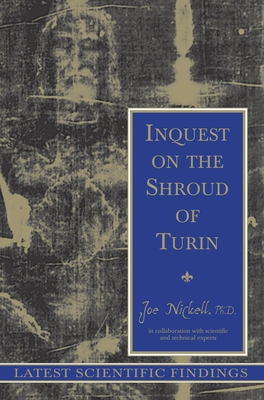


It’s a scientific method that tries to find out how old things are. I’m think I’ve heard of this C14 thing before. In February this year Rolfe said the Museum “abandoned all five scientific testing protocols necessary for the test to be conclusive.” The Museum used C14 or carbon-14 testing – but Rolfe argues they didn’t do it the right way.įor example, the museum took its sample from the edge of the cloth – yet that could have been added later, or part of a repair, as its not near the part where Jesus’ blood is said to be. Surely, if the British Museum has tested it scientifically and decided it is fake, that’s the end of the story? He’s been investigating the subject ever since the screening of his BAFTA award-winning documentary The Silent Witness in 1978. Yes, but there’s been more chatter about the Shroud in recent years.Ī filmmaker called David Rolfe argues that the methods used by the British Museum to date the Shroud were flawed, which he details in his recent documentary Who can he be? He has offered the Museum $1 million if it is able to show how the Shroud could have been forged. So in many people’s minds, that was the end of it? In 1988, the British Museum used the relatively new method of radiocarbon dating to test the Turin Shroud, and declared it to be a forgery that was created in the middle ages. But they have to admit there’s just not much historical evidence that this particular shroud is the same as the one referred to in the earlier records. Those who believe it is genuine argue that there have been records of Jesus’ burial cloth throughout church history. There are records of the cloth we now know as the Turin Shroud since the middle ages – but its authenticity has been questioned throughout that time. But it’s hard to prove whether this particular cloth is it. If you think about it, the first believers at the tomb would likely have kept the cloth they found. Why do people believe it was the cloth Jesus was wrapped in?Ī cloth is mentioned as significant in all four gospel accounts – the wrapping of the body by Joseph of Arimathea, and the disciples finding the cloths after the resurrection (Matthew 27:57-59 Luke 24:12). Various explanations have been given - perhaps this is just a painting, or a very primitive form of photography.īut those who believe the Shroud is authentic have suggested the energy released from Christ's body at the moment of resurrection caused a supernatural imprint to be made. The shroud has been housed in various churches since at least the 14th century – perhaps longer. It is kept in the town of Turin, in northern Italy, hence its name.īut wrapping a body in a cloth wouldn't normally result in such a clear image of a person's body and face, would it? If they're right, the above image is of Jesus Christ himself. Some people believe this was the original cloth that was used to wrap Jesus after his crucifixion. In more recent years, digital technology has given us a clearer view of this mystery man (see above image). It’s a piece of cloth that has a very faint outline of a man’s face and body imprinted on it. Right: Negative image (digitally enhanced) Summer reading guide: 18 books to add to your list.Freedom in Christ founder Neil T Anderson on spiritual warfare, mental health and the end times.Wes Streeting MP: ‘My faith made it very difficult to accept my sexuality’.


 0 kommentar(er)
0 kommentar(er)
